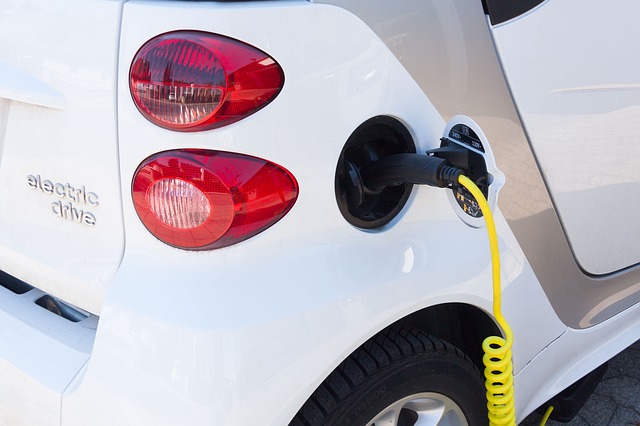When Will Hydrogen Fuel-Cell Cars Be Mass Produced?
7 November 2020 by Tristan Perry
While there has been a great deal of development towards improved car battery technology, in particular the Lithium-ion battery. As range, charging speeds and longer life of batteries on the market continue to get better, it looks increasingly like the Lithium-ion battery will become the future all-electric automotive force.
In fact, there is another contender for the eco-friendly fuel throne, and that is Earth’s single most abundant element of them all: hydrogen. Some analysts claim that hydrogen will in fact be the next big thing. The components behind Lithium-ion battery, even with reduced reliance on things like cobalt, still make them a tough sell when you want to put the entire world onto them. Hydrogen, on the other hand, is literally all around us.
Right now, FCEV production looks bleak – but so did EV production a decade ago! The hydrogen fuel cell car market is expected to hit $14 billion by 2026, which would be ‘mass production’ territory.
Contents covering:
1 Why Aren’t We Using Hydrogen Already?
2 Is Everyone This Pessimistic About Hydrogen?
3 Is Hydrogen Fuel Coming for Real?
4 Conclusion: The Future Looks Promising
Why Aren’t We Using Hydrogen Already?
The Toyota Miria fuel cell car
The Toyota Miria fuel cell car
In fact, we are! Toyota has already released a car that employs hydrogen fuel cells as the main means of creating the electricity needed to run the electric motors. The Toyota hydrogen FCEV is called the Mirai. It has a range of 312 miles on a full tank, making it roughly the equivalent to a 66mpg vehicle. Since 2015, Toyota have been selling the Mirai in various countries around the world, demonstrating their belief in the hydrogen fuel-cell technology. Honda and Hyundai also have competing models.
The first reason hydrogen as of yet is not as widespread is cost. The hydrogen fuel is expensive. While some sellers promise a supply of fuel along with your purchase, we can’t disregard the real cost of the hydrogen. In California, according to the California Fuel Cell Partnership a single kilo of hydrogen costs $16.51. The cars themselves are also quite pricey, even when you factor in rebates. The starting price for the 2020 Mirai, for instance, is $58,550. Even with $15,000 of free fuel, it’s a lot of money for the amount of car you get.
A second big reason for hydrogen not being so ubiquitous is efficiency. Once a typical EV battery pack is in place and working properly, all the driver has to do is plug it in to charge, and then use it. The hydrogen that we need to run FCEVs, however, is common but harder to get at than you’d think. Hydrogen binds with just about everything, so in order to get the pure hydrogen we need to create the fuel system, it has to be extracted, then compressed into fuel tanks.
There are multiple processes for this extraction, but in order to keep a fleet of these cars running they have to be ongoing all of the time, to meet the demands of a growing user base. An EV battery, once made, is simply left to the user to charge using power from the grid. The logistics of the fuel creation, as well as the drivers having to find stations that can supply the fuel they need when it’s time to top-up, make hydrogen an increasingly unattractive proposition to many skeptics out there.
Is Everyone That Pessimistic About Hydrogen?
The short answer to that is no. Many remain optimistic that as hydrogen extraction and compression technologies improve, and thus get cheaper, the sheer expense can come down and hydrogen will become a viable alternative to both internal combustion engines and regular battery-powered electric cars.
While it’s true that once installed, Lithium-ion batteries are convenient for the user, they are not exactly 100 percent eco-friendly in themselves. They produce no emissions as part of that automotive system, but the batteries have to be produced somewhere, and that “somewhere” is usually a carbon-emitting facility. Jon Hunt, a marketing manager for Toyota, said that in order to produce a Lithium-ion battery capable of 250 miles of range on a single charge would require around 20 tons of carbon dioxide into the atmosphere.
Hunt further points out that beyond Toyota, Honda and Hyundai, every manufacturer is currently looking into or working on their own hydrogen fuel-cell models. It is, after all, the cleanest-possible fuel, with the car emitting nothing but water, and the processes involved in getting the hydrogen not being as carbon-heavy as those for Lithium-ion batteries. As production of hydrogen transfers to renewables, that cleanliness rating can improve even further.
Finally, while it’s true that charging your EV at home and relying far less on refueling stations in everyday life is hugely convenient, it is not necessarily the answer we need. Level 1 home EV charging solutions are arguably inadequate to meet the needs of cars with an ever-increasing range. That trickle will no longer fill the bucket. Level 2 solutions require charging wall boxes and usually professional installation and maintenance. It’s a neat solution when you can get it installed, but for many who live in built-up areas without private parking or the ability to install their own charging solution, it’s far from ideal. Hydrogen, on the other hand, is simple a cleaner way to do what they already know all too well – visit the gas station en route.
Is Hydrogen Fuel Coming for Real?
Pipelines in Alaska, from Kevin Abbott of FreeImages.com
Pipelines in Alaska.
It’s always hard to picture exactly when a new industry will really take off. Many single factors can affect the development of such technology dramatically. Many world governments committing to ridding new combustion-engine cars from sale as soon as 2035 has been a huge boon to the prospects of regular EV vehicles. They know for a fact that if they keep on as they are, they’ll become increasingly dominant in the coming years.
Fans and hydrogen hopefuls shouldn’t fear, however. Though there is often not much fanfare or news about this amazing technology, there are still many big players already working with it and planning for the future. In this respect, Toyota’s Jon Hunt was correct. Globe News Wire reported in September 2020 that the fuel cell electric vehicle (FCEV) market is predicted to hit $14 billion by 2026.
It all starts with the producers and “keepers” of the initial technology that supports this exciting new infrastructure. Some of the big movers in this world include Meritor, Ballard Power Cells, US Hybrid, Nuvera, Hydrogenics, Sunrise Power, Dana Limited, Ceres Power Holdings Plc, and Shanghai Shenli Technology. From this we can see that this is not some fringe sector with one or two tiny companies working out of basement laboratories. This is already a rich industry and set to become even richer by 2026.
On the vehicle production side, there are Toyota, Hyundai and Honda, as we already mentioned. Besides them, you’ll find examples from Audi and Volkswagen Group. Industry analysis from all these players in the technology and vehicle production side tells us that growing concerns over emissions and advancements in the automation and more efficient production in the necessary hydrogen fuel are behind the projected growth in the FCEV sector.
Conclusion: The Future Looks Promising
For hydrogen and other FCEV technologies, it may look bleak currently, but so too did it look this way for EVs only a small number of years ago. Who would have believed that within such a short time, even makers like GMC with their reputation for gargantuan gas-guzzlers would be focusing so much of their resource base into EV technology like their upcoming Hummer EV?
We shouldn’t really think of hydrogen as a competitor of regular EVs, but rather as an accompaniment; an augmentation. To make emission-free fuel systems the mainstream, it’s always good to have options. Those with convenient set ups for charging stations at home will likely favor the EV, but those living in cities with good access to gas stations will love having a hydrogen option. The two can work together symbiotically. We should, therefore, expect automakers to pursue hydrogen vigorously, just as soon as the technology becomes cheaper and therefore more viable for mass production.
It’s almost poetic that after so many years of relying on fuels and elements that were buried so deep and hard, even dangerous, to get at, we now turn to nature’s most abundant fuel that sits and floats all around us all of the time, like it’s been waiting for us an entire eon. The age of hydrogen is coming!
7 November 2020 by Tristan Perry
While there has been a great deal of development towards improved car battery technology, in particular the Lithium-ion battery. As range, charging speeds and longer life of batteries on the market continue to get better, it looks increasingly like the Lithium-ion battery will become the future all-electric automotive force.
In fact, there is another contender for the eco-friendly fuel throne, and that is Earth’s single most abundant element of them all: hydrogen. Some analysts claim that hydrogen will in fact be the next big thing. The components behind Lithium-ion battery, even with reduced reliance on things like cobalt, still make them a tough sell when you want to put the entire world onto them. Hydrogen, on the other hand, is literally all around us.
Right now, FCEV production looks bleak – but so did EV production a decade ago! The hydrogen fuel cell car market is expected to hit $14 billion by 2026, which would be ‘mass production’ territory.
Contents covering:
1 Why Aren’t We Using Hydrogen Already?
2 Is Everyone This Pessimistic About Hydrogen?
3 Is Hydrogen Fuel Coming for Real?
4 Conclusion: The Future Looks Promising
Why Aren’t We Using Hydrogen Already?
The Toyota Miria fuel cell car
The Toyota Miria fuel cell car
In fact, we are! Toyota has already released a car that employs hydrogen fuel cells as the main means of creating the electricity needed to run the electric motors. The Toyota hydrogen FCEV is called the Mirai. It has a range of 312 miles on a full tank, making it roughly the equivalent to a 66mpg vehicle. Since 2015, Toyota have been selling the Mirai in various countries around the world, demonstrating their belief in the hydrogen fuel-cell technology. Honda and Hyundai also have competing models.
The first reason hydrogen as of yet is not as widespread is cost. The hydrogen fuel is expensive. While some sellers promise a supply of fuel along with your purchase, we can’t disregard the real cost of the hydrogen. In California, according to the California Fuel Cell Partnership a single kilo of hydrogen costs $16.51. The cars themselves are also quite pricey, even when you factor in rebates. The starting price for the 2020 Mirai, for instance, is $58,550. Even with $15,000 of free fuel, it’s a lot of money for the amount of car you get.
A second big reason for hydrogen not being so ubiquitous is efficiency. Once a typical EV battery pack is in place and working properly, all the driver has to do is plug it in to charge, and then use it. The hydrogen that we need to run FCEVs, however, is common but harder to get at than you’d think. Hydrogen binds with just about everything, so in order to get the pure hydrogen we need to create the fuel system, it has to be extracted, then compressed into fuel tanks.
There are multiple processes for this extraction, but in order to keep a fleet of these cars running they have to be ongoing all of the time, to meet the demands of a growing user base. An EV battery, once made, is simply left to the user to charge using power from the grid. The logistics of the fuel creation, as well as the drivers having to find stations that can supply the fuel they need when it’s time to top-up, make hydrogen an increasingly unattractive proposition to many skeptics out there.
Is Everyone That Pessimistic About Hydrogen?
The short answer to that is no. Many remain optimistic that as hydrogen extraction and compression technologies improve, and thus get cheaper, the sheer expense can come down and hydrogen will become a viable alternative to both internal combustion engines and regular battery-powered electric cars.
While it’s true that once installed, Lithium-ion batteries are convenient for the user, they are not exactly 100 percent eco-friendly in themselves. They produce no emissions as part of that automotive system, but the batteries have to be produced somewhere, and that “somewhere” is usually a carbon-emitting facility. Jon Hunt, a marketing manager for Toyota, said that in order to produce a Lithium-ion battery capable of 250 miles of range on a single charge would require around 20 tons of carbon dioxide into the atmosphere.
Hunt further points out that beyond Toyota, Honda and Hyundai, every manufacturer is currently looking into or working on their own hydrogen fuel-cell models. It is, after all, the cleanest-possible fuel, with the car emitting nothing but water, and the processes involved in getting the hydrogen not being as carbon-heavy as those for Lithium-ion batteries. As production of hydrogen transfers to renewables, that cleanliness rating can improve even further.
Finally, while it’s true that charging your EV at home and relying far less on refueling stations in everyday life is hugely convenient, it is not necessarily the answer we need. Level 1 home EV charging solutions are arguably inadequate to meet the needs of cars with an ever-increasing range. That trickle will no longer fill the bucket. Level 2 solutions require charging wall boxes and usually professional installation and maintenance. It’s a neat solution when you can get it installed, but for many who live in built-up areas without private parking or the ability to install their own charging solution, it’s far from ideal. Hydrogen, on the other hand, is simple a cleaner way to do what they already know all too well – visit the gas station en route.
Is Hydrogen Fuel Coming for Real?
Pipelines in Alaska, from Kevin Abbott of FreeImages.com
Pipelines in Alaska.
It’s always hard to picture exactly when a new industry will really take off. Many single factors can affect the development of such technology dramatically. Many world governments committing to ridding new combustion-engine cars from sale as soon as 2035 has been a huge boon to the prospects of regular EV vehicles. They know for a fact that if they keep on as they are, they’ll become increasingly dominant in the coming years.
Fans and hydrogen hopefuls shouldn’t fear, however. Though there is often not much fanfare or news about this amazing technology, there are still many big players already working with it and planning for the future. In this respect, Toyota’s Jon Hunt was correct. Globe News Wire reported in September 2020 that the fuel cell electric vehicle (FCEV) market is predicted to hit $14 billion by 2026.
It all starts with the producers and “keepers” of the initial technology that supports this exciting new infrastructure. Some of the big movers in this world include Meritor, Ballard Power Cells, US Hybrid, Nuvera, Hydrogenics, Sunrise Power, Dana Limited, Ceres Power Holdings Plc, and Shanghai Shenli Technology. From this we can see that this is not some fringe sector with one or two tiny companies working out of basement laboratories. This is already a rich industry and set to become even richer by 2026.
On the vehicle production side, there are Toyota, Hyundai and Honda, as we already mentioned. Besides them, you’ll find examples from Audi and Volkswagen Group. Industry analysis from all these players in the technology and vehicle production side tells us that growing concerns over emissions and advancements in the automation and more efficient production in the necessary hydrogen fuel are behind the projected growth in the FCEV sector.
Conclusion: The Future Looks Promising
For hydrogen and other FCEV technologies, it may look bleak currently, but so too did it look this way for EVs only a small number of years ago. Who would have believed that within such a short time, even makers like GMC with their reputation for gargantuan gas-guzzlers would be focusing so much of their resource base into EV technology like their upcoming Hummer EV?
We shouldn’t really think of hydrogen as a competitor of regular EVs, but rather as an accompaniment; an augmentation. To make emission-free fuel systems the mainstream, it’s always good to have options. Those with convenient set ups for charging stations at home will likely favor the EV, but those living in cities with good access to gas stations will love having a hydrogen option. The two can work together symbiotically. We should, therefore, expect automakers to pursue hydrogen vigorously, just as soon as the technology becomes cheaper and therefore more viable for mass production.
It’s almost poetic that after so many years of relying on fuels and elements that were buried so deep and hard, even dangerous, to get at, we now turn to nature’s most abundant fuel that sits and floats all around us all of the time, like it’s been waiting for us an entire eon. The age of hydrogen is coming!
Kind Regards / Meilleures salutations /Léif Greiss,
Clive MUNN(ACIB)
Clive MUNN(ACIB)
There are no replies made for this post yet.
Be one of the first to reply to this post!
Be one of the first to reply to this post!




























